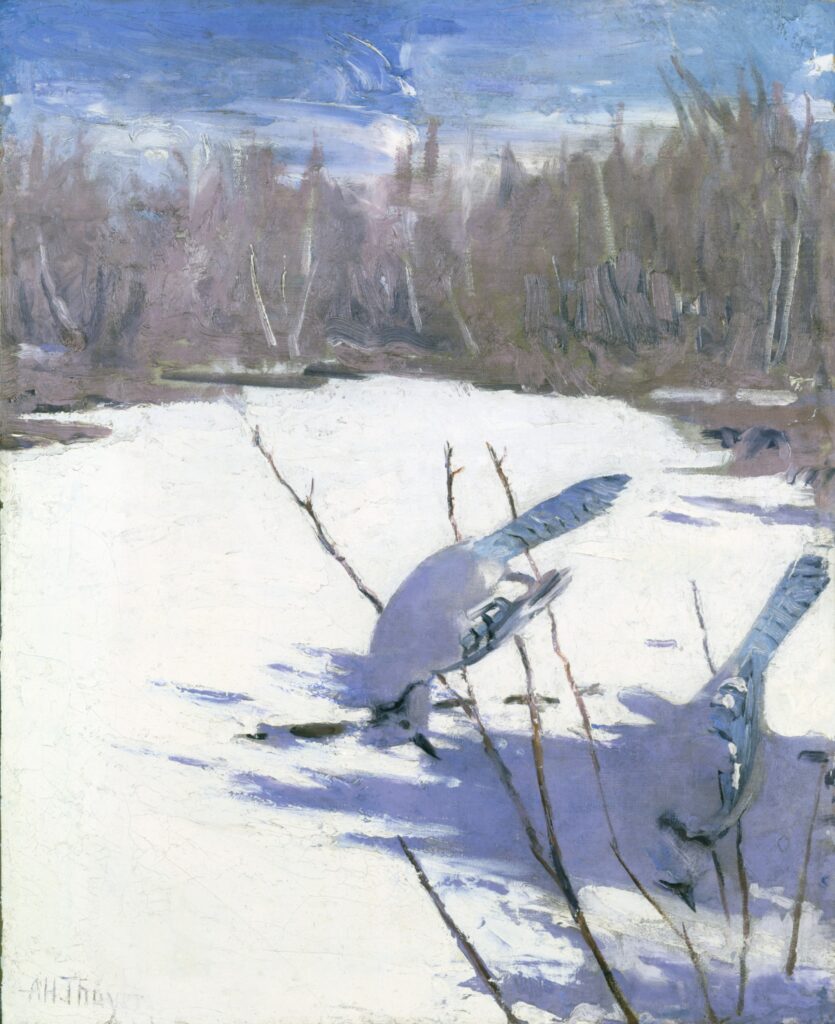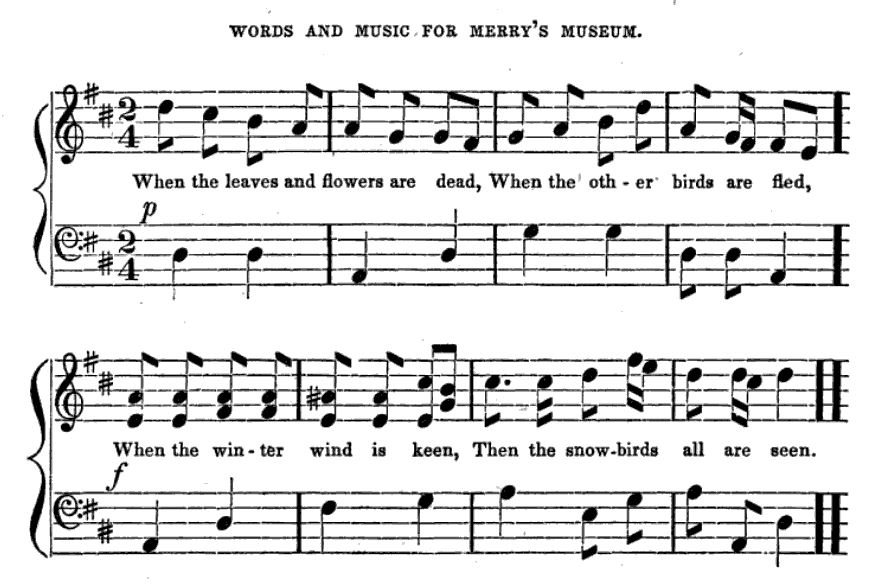The Snow-Bird
Author Unknown
Annotations by Maggie Kelly/JB

When the leaves and flowers are dead, When the other birds are fled, When the winter wind is keen, Then the snow-birds all are seen. When the flakes are falling fast, When the forest feels the blast, When the drifts in circles play, ’Tis the snow-birds’ holiday. When the earth is covered deep, When in ice the rivers sleep, When all other things are sad, Hark! the snow-birds’ voice is glad! When the frost is on the pane, When the wailing winds complain, When the boys come shivering in, Hark! the snow-birds’ cheerful din! But when Spring, ’mid rosy light, Bids stern Winter take his flight, The snow-birds, in his stormy train, Fly northward, where he holds his reign.
author unknown. “The SNow-Bird.” ROBERT MERRY’S MUSEUM 15, no. 2 (February 1848): 64.
Contexts
This poem was published as lyrics to a song, and the melody was included in the original printing.

This was not the only song with “snow-bird” in the title, as Francis C. Woodworth (lyrics) and Susanna Newbold (music) published “The Song of the Snow-Bird” in the January 1858 edition — a popular song that also appeared in other periodicals.
The image included above this poem is from Abbott Handerson Thayer’s book Concealing Coloration in the Animal Kingdom. Here is the label underneath this painting, which is located at the Luce Center in the Smithsonian American Art Museum:
“In 1909, Abbott Handerson Thayer and his son, Gerald, published a controversial book titled Concealing Coloration in the Animal Kingdom, offering their theory of animal camouflage. Thayer believed that the coloration of animals, no matter how eye-catching, was meant to disguise them in nature through what he called ‘countershading.’ Even bright pink flamingoes would vanish against a similar colored sky at sunset or sunrise. No matter that at times their brilliant feathers were highly visible, their coloration would protect them from predators at crucial moments so that ‘the spectator seems to see right through the space occupied by an opaque animal.'”
“Not all readers were convinced. The most passionate criticism came from Teddy Roosevelt, who was in Africa when the book came out. He protested upon his return that Thayer’s theory was ludicrous, arguing that on his trip he had spotted some of the animals Thayer mentioned from miles away. Roosevelt’s challenge sparked a heated debate between the two men. Roosevelt wrote a 112-page article refuting Thayer’s ideas; Thayer repeatedly invited Roosevelt to his home in New Hampshire, hoping to demonstrate his theories, but Roosevelt always refused (Nemerov, “Vanishing Americans: Abbott Thayer, Theodore Roosevelt, and the Attraction of Camouflage,” American Art, Summer 1997).”
Resources for Further Study
- For background on the children’s magazine Robert Merry’s Museum, visit Pat Pflieger’s website.